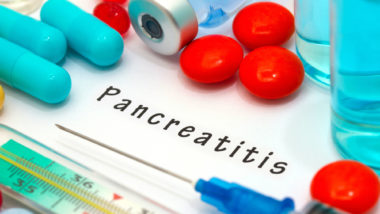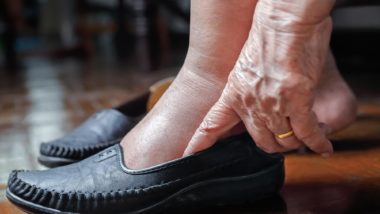Top Class Actions’s website and social media posts use affiliate links. If you make a purchase using such links, we may receive a commission, but it will not result in any additional charges to you. Please review our Affiliate Link Disclosure for more information.

The good news is that the condition is extremely rare among healthy individuals. There are however risk factors to beware of, particularly for those who suffer from poorly-controlled type-2 diabetes or who take certain medications to manage the condition.
What Are the Flesh Eating Bacteria?
Most cases of necrotizing fasciitis are caused by a number of common bacterial species, which include:
- Staphylococcus aureus (can cause food poisoning and nose and throat infections)
- Streptococcus pyogenes (responsible for pharyngitis and toxic shock)
- Escherichia coli (a common hazard in raw or undercooked meats)
- Pseudomonas aeruginosa (can cause hospital-related infections)
- Vibrio vulnificus (a saltwater bacteria that enters through a cut or laceration)
- Various strains of enterococci, bacteroides and clostridium (common cause of diarrhea)
The fact is that most of these bacteria are all around us, in the environment, and even in our bodies. Do not panic, however; as stated above, those who are otherwise healthy are at very low risk for necrotizing fasciitis.
What are the Signs?
A flesh-eating bacteria infection can present several symptoms, not all of which initially seem serious. These can include:
- generalized fatigue or weakness
- fever
- nausea and vomiting
- dizziness
- frequent urination
Outwardly, necrotizing fascitiis initially presents as a small, painful rash or red pimple. Eventually, this area grows and spreads quickly, turning into blisters and oozing skin lesions. However, an accurate diagnosis requires medical tests, including a biopsy.
Who is at Risk?
The disease is extremely rare in the US, affecting fewer than one in 250,000 annually. At highest risk are those who have compromised immune systems or suffer from diabetes, alcoholism, and constricted arteries. People who use steroids or intravenous drugs are also at risk.
One type of flesh eating bacteria infection, known as Fournier’s Gangrene, has been strongly associated with a class of diabetic medications known as SGLT2 inhibitors. These medications, like Farxiga, work by disabling a mechanism by which the kidneys reabsorb blood sugar (glucose) and normally releases it back into the bloodstream. Instead, this excess glucose is passed through the urine. Not coincidentally, this particular flesh eating bacteria attacks the genital and perineal areas of the body.
Can Flesh Eating Bacteria Infections be Treated?
The first line of treatment is surgical debridement, or removal of the affected tissues. In extreme cases, multiple surgeries, including amputation, is necessary. Once this has been done, the patient is treated with powerful, broad-spectrum antibiotics administered intravenously.
What is the Prognosis?
Long-term survival depends on the severity and extent of the flesh eating bacteria. Early diagnosis and treatment is important, otherwise, the condition can be fatal. Since each case of necrotizing fasciitis is unique, only a physician can advise the patient.
Can it be Prevented?
While there is no absolutely certain way of preventing necrotizing fasciitis, one can greatly reduce the risks by practicing basic hygiene and cleaning and treating lacerations and burns as soon as possible – even if they seem minor. Additionally, warning labels on SGLT2 drugs being used to treat diabetes should be read, ensuring safety.
Join a Free Diabetes Medications & Flesh-Eating Infection Lawsuit Investigation
The type-2 diabetes medications linked to the flesh-eating infection include:
- Invokana
- Invokamet/Invokamet XR
- Farxiga
- Xigduo XR
- Qtern
- Jardiance
- Glyxambi
- Synjardy/Synjardy XR
- Steglato
- Segluromet
- Steglujan
If you or a loved one took one of the type-2 diabetes medications listed above and suffered from a flesh-eating genital infection, you may qualify to join this diabetes medication lawsuit investigation. Fill out the FREE form on this page for more information.
ATTORNEY ADVERTISING
Top Class Actions is a Proud Member of the American Bar Association
LEGAL INFORMATION IS NOT LEGAL ADVICE
Top Class Actions Legal Statement
©2008 – 2024 Top Class Actions® LLC
Various Trademarks held by their respective owners
This website is not intended for viewing or usage by European Union citizens.
Get Help – It’s Free
Join a Free Diabetes Medications & Flesh-Eating Infection Lawsuit Investigation
If you qualify, an attorney will contact you to discuss the details of your potential case at no charge to you.
PLEASE NOTE: If you want to participate in this investigation, it is imperative that you reply to the law firm if they call or email you. Failing to do so may result in you not getting signed up as a client or getting you dropped as a client.
E-mail any problems with this form to:
Questions@TopClassActions.com.
Oops! We could not locate your form.












